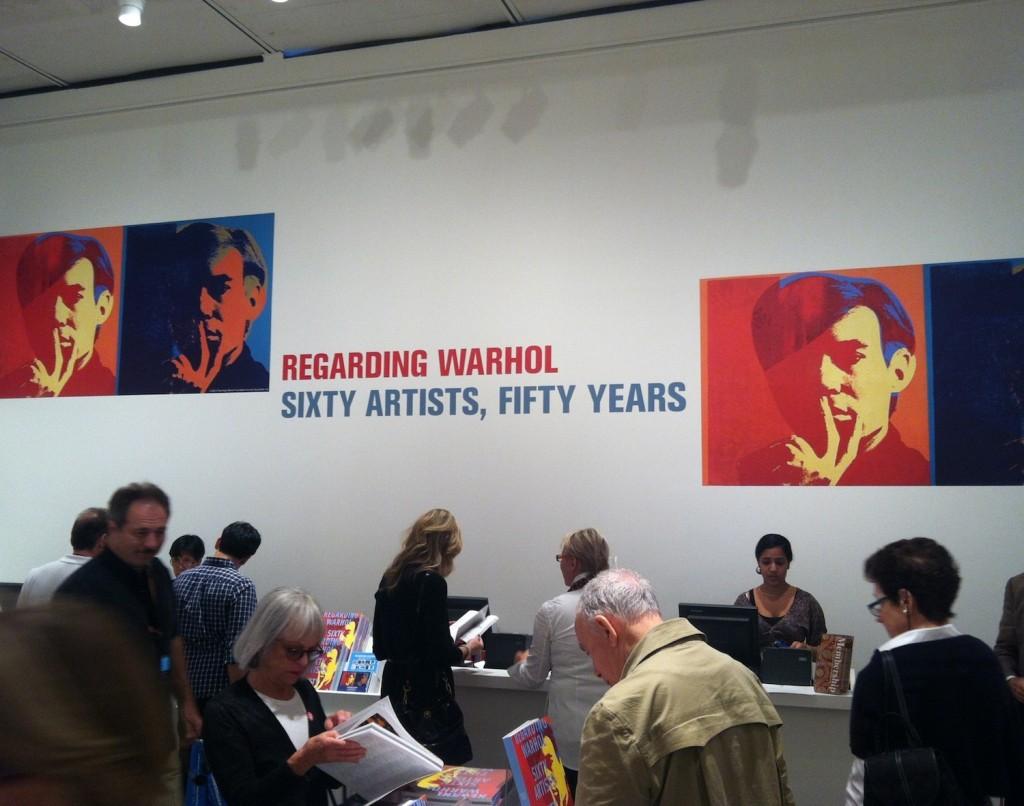A Fifty-Year-Long Walk with Warhol and His Followers
October 4, 2012

It’s Sept. 16, the last day of previews for the long-awaited exhibit on Andy Warhol, “Regarding Warhol: Sixty Artists, Fifty Years.” There is always some excitement between New Yorkers when the Metropolitan Museum of Art affixes a huge flag on its main entrance proclaiming a new exhibition. There is a tangible sense of wonder: “What is coming next?” As I climb the stairs of the museum, immersed in the exquisite environment of musicians playing soft songs, art students carrying their drawing books and tourists their maps, I feel that same excitement.
This new exhibition is composed of art works from several public and private collectors with the goal of representing Warhol’s conception of art, as well as his massive influence on artists who followed him. The exhibit positions his work alongside those of over 60 different artists, expanding a period of 50 years. Declared the most inscrutable figure in American art, Andy Warhol became the icon of a culture obsessed with image. Warhol did not only make art, he remade the concept of what art could be. He is a crucial figure of the cultural transition of the ’50s and ’60s: he represents the economic boom and its consequences in his art.
The exhibit that I am going to see is definitely going to be different from the drawings of Greek and Roman statues that I see passing by some art students. I notice the two big faces of Warhol’s self-portrait staring at me and I enter the Tisch Gallery. The first work of art that I encounter walking into the gallery, “Before and After,” by Warhol, is definitely modern. One half of it showed the side of the face of a woman with a big nose; the second one is shown from the same profile, but with a perfect pointy nose. This first part of the exhibit, “Daily News: From Banality to Disaster,” has a combination of works that represent everything from new models of beauty to social issues (as Warhol’s Ambulance Disaster). For instance, this structure seem to recall that of a newspaper.
The following section stresses consumerism, typical of the “economic boom.” No one in the room understands what is happening when an old lady reads out loud “Neoletic phase of the Coca-Cola!” and then breaks into a loud laugh that makes everyone smile. The clay vase (2010) by Ai WeiWei (protagonist of the first work of director Alison Klayman in the documentary exploring his art, “Never Sorry”) is a tribute to the famous bottle shapes of the Coca-Cola that Warhol created during his career. This work is significantly followed by a quote from Warhol about the abundance of consumerism- a “positive equalizer:” “What’s great about this country is that America started the tradition where the richest consumers buy essentially the same things as the poorest.”
A ceramic statue of Michael Jackson holding a monkey stands out between the acrylic silkscreen faces of Marylin Monroe and Elizabeth Taylor. One, by Jeff Koons, opens the last section of the exhibition, recalling some of the most important issues stressed by Warhol through his art— racism, homosexuality and the obsession with perfection. A double neon sign on the wall is next to catch my eye. This piece, by Bruce Nauman, is composed of a base neon sign that forms the word “DEATH” and another on top which highlights the word “EAT.” This work stresses the growing issue of eating disorders that America faces. The pictures, videos and statues of transvestites recall the crucial moment when gay people started to feel free to stand out to society. These are tributes to Warhol’s defense of gay rights by a variety of artists. Warhol, who was gay himself, fought against the prejudices that society had against the perception of sexuality typical of those years: “Drag queens are sexual radicals, not depressing losers,” is the quote that flanks these last works of art.
Warhol’s work may not be fully comprehensible at times— there were many people murmuring “What the hell does this even mean?” during the exhibit— but it sticks to his point. He is not only the father of a complex society that changed radically in such a brief time; he gave permission to do virtually anything in the name of art.
IF YOU GO
Regarding Warhol: Sixty Artists, Fifty Years
When: Now through Dec. 31.
Where: Metropolitan Museum of Art.
Price: $12
More Info: (212) 535-7710
http://www.metmuseum.org/









